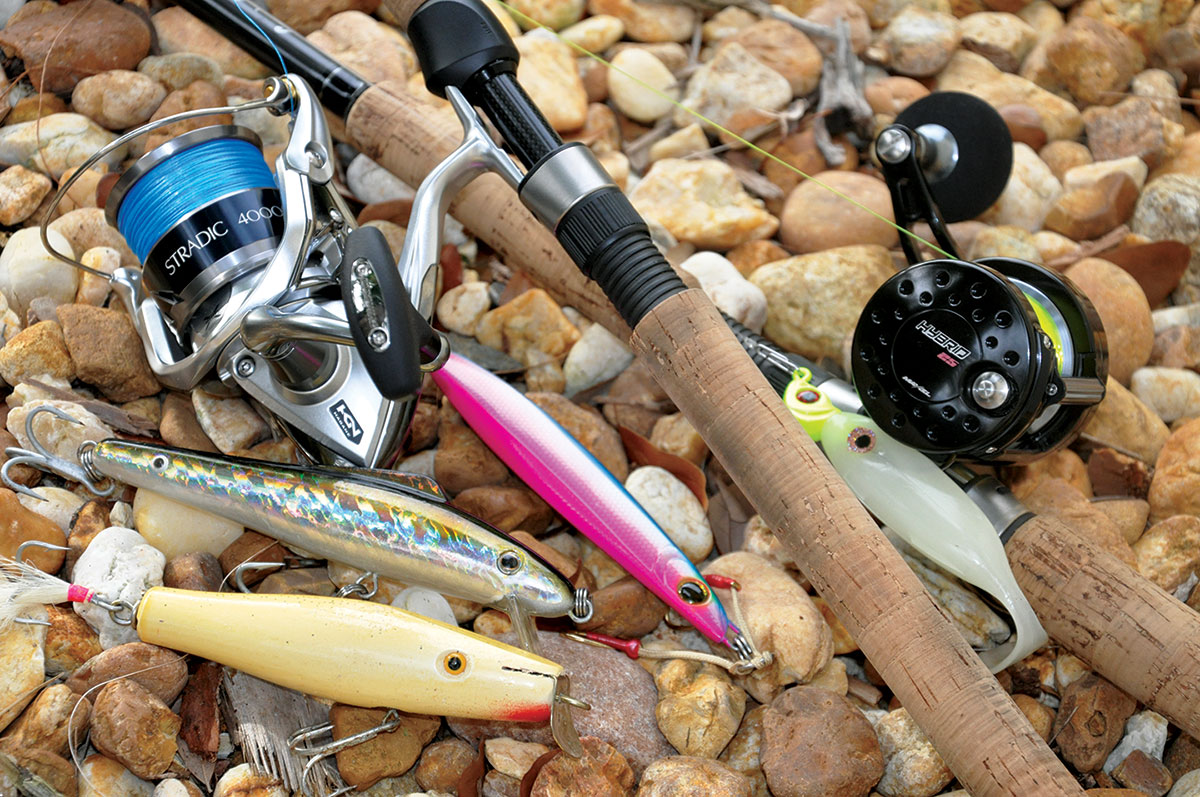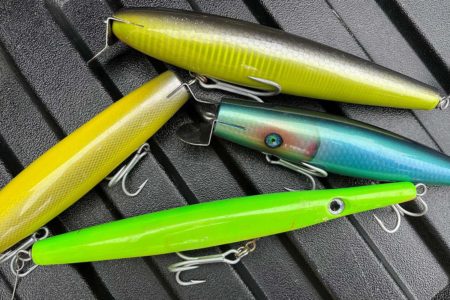
Your favorite tackle shops are re-stocking their displays with the latest tackle and if you’re looking to add a new reel to your arsenal this is the prime time to check them out. One big question when buying a new reel is the gear ratio, and it’s a feature that’s often overlooked. Or, fishermen buy a reel with the fastest possible retrieve because “faster is better, right?” Well, maybe not. Depends on how you fish and what you’re fishing for.
The gear ratio is the relationship between the reel’s large gear, called the drive gear and the small gear, called the pinion gear. If the drive gear has 100 teeth and the pinion gear has 20 teeth the gear ratio is 5:1. Stated another way, this ratio means that for every crank of the handle, a conventional-reel spool will turn five times, and a spinning reel’s rotator head and bail will turn five times. Gear ratios typically range from about 4:1 on the low side to over 7:1 on the high side.
Probably more important to the fisherman is the number of inches of line the reel retrieves for each handle crank. Given the same gear ratio, a reel that is physically larger with a large spool diameter will take in more line every time the handle is cranked than a smaller reel with a small spool diameter.
Spool width should also be considered. When comparing two reels with the same diameter spools and fully packed with line, a narrow spool will lose more diameter than a wide spool given the same amount of line pulled from each. The small-spool, high-speed reel will then retrieve less line per handle crank when, let’s say, 50 feet of line is off the reel. On a reel meant for inshore jigging in relatively shallow water this may be insignificant, but on a reel meant for inshore or freshwater plug casting, or surf fishing, the change in amount of line retrieved per handle crank can be quite dramatic, if 100 feet of line is pulled from the reel.
A high gear ratio is handy for offshore anglers who need to quickly retrieve a san cocho’d bait to get another fresh bait back into the pattern when a white marlin is eye balling the pattern, a time when seconds count. Gaining a few yards of line instantly is helpful to turn a blackfish or cod before it can get its head and runs back into a wreck. And, some lures are at their best action when travelling at high speed.
A high gear ratio is an essential feature to get line rapidly back onto the spool when fishing with no-stretch lines as when short stroking a yellowfin tuna hooked while chunking. You’ll be able to get every inch of line gained on the rod lift as you lower the rod and crank the handle to get set for the next rod lift. This is also true with wire line, where you need to steadily gain line with no chance of any slack that could cost you a fish.
High speed reels save plenty of potential lost catches by gaining slack line quickly. Spring bluefish that smack a popper then run at the boat or kayak create yards of slack that must be cranked back onto the reel if you hope to keep tight to the fish. Same with offshore tuna that at times can change course in a split second and run right at you. You have to gain that slack line back onto the reel before the hook unbuttons and “goodbye” fish. The last few feet when a bass is rolling in the wash when surf fishing can also cause some slack, and a rapid reel will solve the problem.
When inshore jigging, if you’re looking to keep your tackle light in weight, choose a small-size reel with a high gear ratio instead of larger, heavier reel with a slower gear ratio. You’ll easily crank in enough line to zip a diamond jig through the water to get plenty of bites with fall bluefish.
Most fast-speed reels can easily be cranked at a slower pace if you need to. The same conventional reel that delivered a fast jig speed for October bluefish will also catch striped bass in November when a slower jig speed is productive. Ditto for spinning reels; you can present a swim plug at night at a leisurely speed by just slowing down the number of handle cranks, or speed it up if you need to work a plug faster.
To enhance the crank speed, some conventional reels offer extended handles. Be careful though; a very long reel handle on a conventional reel can be uncomfortable to crank if the diameter (the circle) that the hand has to turn is so large that the cranking motion feels awkward. If you’re right handed, it helps to keep the rod butt nestled under your left armpit to comfortably crank the reel handle without the rod and reel “wobbling” like a toddler learning to walk.




